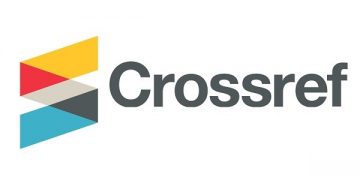ANALISIS KEMAMPUAN BERPIKIR KOMPUTASI MENGGUNAKAN SPEQ MATHEMATICS PADA SISWA SMP/TSANAWIYAH
DOI:
https://doi.org/10.61722/jssr.v3i3.4577Keywords:
Computational Thinking, SpeQ Mathematics, Decomposition, Qualitative Approach, Abstraction Ability and AlgorithmsAbstract
The purpose of this study was to analyze the computational thinking skills of junior high
school students in solving mathematics problems using the SpeQ Mathematics application. This
study applies a qualitative approach with a descriptive design. Data were obtained through
student journals and observations of student interactions with the application. The data analysis
process was carried out using the Dedoose application to code and evaluate qualitative data
based on computational thinking indicators, namely decomposition, pattern recognition,
abstraction, and algorithms. The results of the analysis showed that the majority of students
showed good abilities in terms of decomposition and pattern recognition, but faced challenges in
the aspects of abstraction and algorithm construction. The use of the SpeQ Mathematics
application has proven effective in helping students understand mathematical concepts with a
more visual and interactive approach. Overall, this study concludes that the SpeQ Mathematics
application can improve students' computational thinking skills, although additional practice is
needed to develop abstraction and algorithm creation skills.
References
Denning, P. J. (2017). The computing revolution: A framework for thinking about the impact of computers on society. Communications of the ACM, 60(12), 22-25.
Grover, S., & Pea, R. D. (2013). Computational thinking in K–12 education and implications for
curriculum development. Educational researcher, 42(1), 38-43. https://doi.org/10.3102/0013189X12463051
Repenning, A., Ioannidou, A., & Sarsar, E. (2015). CS education for all: Using computational thinking to enhance STEM learning. In Proceedings of the 46th ACM technical symposium on computer science education (pp. 423-428).
Wing, J. M. (2006). Computational thinking. Communications of the ACM, 49(3), 33-35. https://doi.org/10.1145/1118178.1118 215
Dedoose. (n.d.). About Dedoose. Retrieved from https://www.dedoose.com
Grover, S., & Basu, S. (2019). Designing for computational thinking: Findings from an exploratory study. Journal of the Learning Sciences, 28(4), 385-412.
Mitchell, M. (2017). Computational thinking and education: From theory to practice. Springer.
Papert, S. (1980). Mindstorms: Children, computers, and powerful ideas. Basic Books.
Resnick, M., & Rosenbaum, E. (2013). Designing for the 21st century: Computing and computational thinking for all. In Proceedings of the Annual Meeting of the American Educational Research Association.
Salomon, G., & Perkins, D. N. (1998). Learning in networks: A meta-analysis of cognitive effects. Educational Technology Research and Development, 46(2), 7-23.
Downloads
Published
Issue
Section
License
Copyright (c) 2025 JOURNAL SAINS STUDENT RESEARCH

This work is licensed under a Creative Commons Attribution-ShareAlike 4.0 International License.













